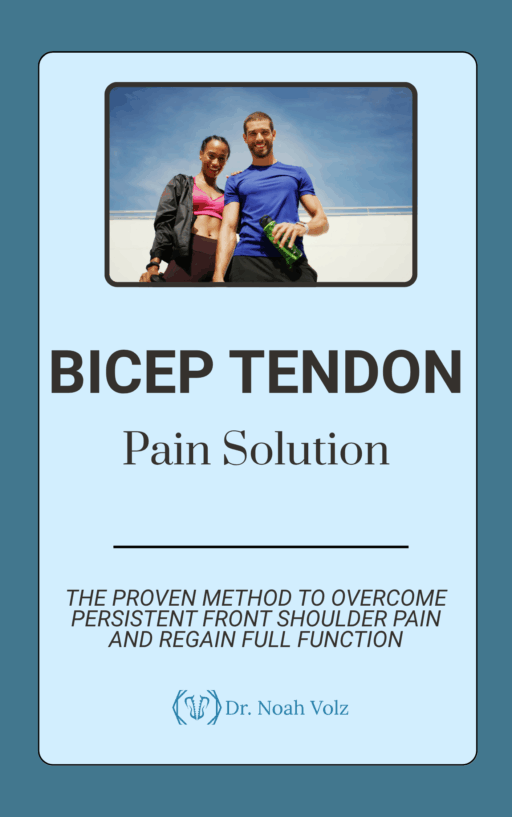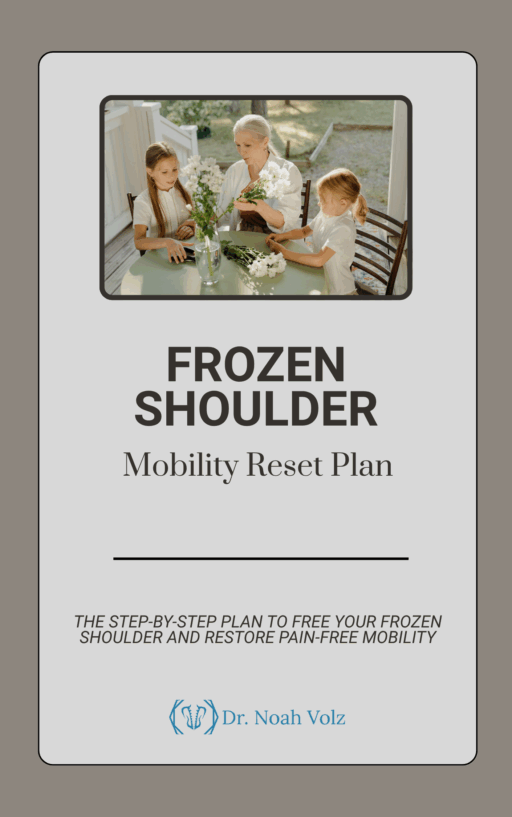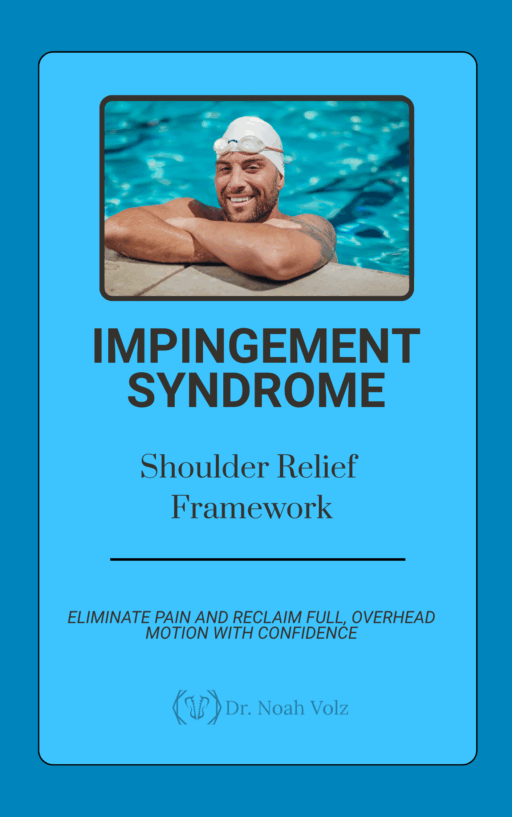Janet had been living with hip pain for years.
She didn’t complain about it. She didn’t broadcast it. She just quietly adjusted her life around it.
Instead of morning hikes at Lithia Park, she started walking slower and shorter routes. Instead of gardening for hours, she settled for 15 minutes before needing to sit down.
When she finally came into my clinic, she sat in the chair across from me and said, “I’ve tried everything I can think of, short of surgery. I’m not ready to go under the knife, but I also can’t keep living like this.”
I hear this story all the time.
The patients I work with are active, intentional, and willing to do the work—but they’ve been given two options: live with it, or have it replaced. They haven’t been told there’s another path.
That’s when I told Janet about radial shockwave therapy—a technology that takes less than 30 minutes per session and helps stimulate the body’s own healing process. No scalpels, no sedation, no injections.
She was skeptical. “Can something that quick actually help after all these years?”
It turns out the answer is yes—and she’s not the only one who’s discovered it.
What Exactly Is Radial Shockwave Therapy?
Radial shockwave therapy (RSWT) is a non-invasive treatment that uses high-energy acoustic waves to activate a deep, natural healing response in soft tissues, joints, and tendons.
Unlike medications, which often dull pain temporarily, or injections, which suppress inflammation for a few months, shockwave therapy works by:
-
Increasing blood flow
-
Breaking up scar tissue and calcification
-
Stimulating collagen production
-
Reactivating stem cells
-
Triggering new blood vessel growth (neovascularization)
In other words, it doesn’t cover up the pain—it targets the biological repair mechanisms that restore joint function and relieve pain naturally.
Each session takes about 20-30 minutes. A specialized handheld device delivers pulsed energy into the tissues surrounding the hip joint—typically the anterior joint line, gluteal tendons, and capsule. Patients often describe the sensation as a rhythmic, percussive tapping—not painful, just unfamiliar.
Most patients notice change after the first few visits. For many, the relief builds over 6 to 8 sessions and continues even after treatment ends.
Why the Hip Responds So Well
Your hip joint is a powerhouse—carrying your weight, absorbing impact, and stabilizing your pelvis with every step. But when arthritis sets in, or when the capsule, labrum, or tendons begin to break down, every motion becomes more difficult.
And because the hip is deeply embedded in soft tissue, treatments like manual therapy or foam rolling often don’t reach the problem area effectively. This is where radial shockwave therapy excels.
Shockwave waves penetrate up to 2.4 inches into the body, reaching deep structures that traditional treatments can’t access. And the effect isn’t just local—it triggers a whole-body repair response that improves tissue resilience long-term.
That’s what makes it such a game-changer for:
-
Hip osteoarthritis (Grades 1–3)
-
Labral irritation
-
Trochanteric bursitis
-
Gluteus medius/minimus tendinopathy
-
Chronic stiffness and reduced mobility
In Janet’s case, her diagnosis was early-stage osteoarthritis with gluteal tendon overload. She was the perfect candidate.
What the Research Says
You don’t have to take my word for it. The science backs this up.
A 2022 study published in the Journal of Personalized Medicine found that radial shockwave therapy significantly reduced pain and improved function in patients with hip osteoarthritis. Researchers noted improvements in walking, balance, and range of motion after just four sessions.
Another review published in Biomed Research International analyzed multiple studies comparing shockwave therapy to standard treatments like corticosteroid injections, medications, ultrasound, and PRP injections. The result?
Shockwave therapy outperformed them all—not just in reducing pain, but in improving mobility and quality of life.
And unlike cortisone injections, which can degrade cartilage over time, shockwave therapy has been shown to stimulate cartilage regeneration and even activate mesenchymal stem cells, which are vital for long-term tissue repair.
This means you’re not just getting a temporary fix—you’re getting actual biological healing.
What Janet’s Recovery Looked Like
We started Janet on an 8-week Non-Surgical Hip Replacement (NSHR) program. Her plan included:
-
Weekly radial shockwave therapy
-
Gentle hip decompression mobilization
-
Chiropractic adjustments to the pelvis and lumbar spine
-
Targeted motor control and strength exercises
-
Anti-inflammatory nutritional guidance and supplements
After the second session, Janet noticed her limp was less pronounced.
By week four, she was walking without a cane.
By week six, she was back in her garden pulling weeds—and smiling.
By the end of the program, she said, “I forgot what it felt like to move without bracing myself. I actually look forward to walking now.”
This wasn’t magic. It was science—and a willingness to try something different.
Why You May Not Have Heard of This
Most people have never heard of shockwave therapy—let alone know it’s available from a chiropractor.
That’s because it’s still gaining traction in the U.S., even though it’s been used across Europe and Asia for decades. Originally developed to break up kidney stones, shockwave therapy has since evolved into a powerful regenerative treatment for musculoskeletal conditions.
Unfortunately, many patients are steered toward injections or surgeries first—not because they’re better, but because they’re better known.
In my clinic, we believe in starting with the least invasive, most natural, and most restorative options first. And shockwave therapy fits that philosophy perfectly.
Is It Right for You?
You might be a good candidate for radial shockwave therapy if:
-
You’ve been diagnosed with early-to-moderate hip osteoarthritis
-
You have persistent hip pain or stiffness that hasn’t improved with rest or PT
-
You want to avoid surgery or ongoing injections
-
You’re active—or want to be—and need a treatment that gets you moving again
It’s not for everyone. But when it works, it works incredibly well.
What to Expect When You Start
Each shockwave session takes 20 to 30 minutes. Most patients begin with weekly treatments for 6–8 weeks. There’s no recovery time required, though some patients feel a temporary soreness that fades within 24–48 hours.
There are no medications, no numbing shots, no downtime.
Most importantly: no surgeries.
Your Next Step
If hip pain is slowly shrinking your life—or if you’ve been told surgery is your only option—I’d love to help you explore another path.
Let’s find out what’s really going on in your hip with a full evaluation. We’ll use functional movement testing, orthopedic screens, and gentle palpation to determine if you’re a fit for our Non-Surgical Hip Program.
You deserve more than short-term fixes. You deserve a body that supports your life—not one that limits it.
Schedule your appointment today and take the first step toward walking strong again—without going under the knife.
-

Bicep Tendon Pain Solution
$50.00 -

Brain Detoxification & Recovery System
$50.00 -

Brain Energy and Endurance Support System
$50.00 -

Brain-Based Movement and Motor Control Training
$50.00 -

Centralized Low Back Pain
$50.00 -

Cervical Radiculopathy: Neck and Nerve Relief Pathway
$50.00 -

Complex Low Back Pain
$50.00 -

Complex Radiating Low Back Pain
$50.00 -

Cross-Pattern Low Back Pain
$50.00 -

Frozen Shoulder Mobility Reset Plan
$50.00 -

Impingement Syndrome: Shoulder Relief Framework
$50.00 -

Mastering Brain Senses: Rebuild Your Hearing, Vision, and Body Awareness
$50.00













